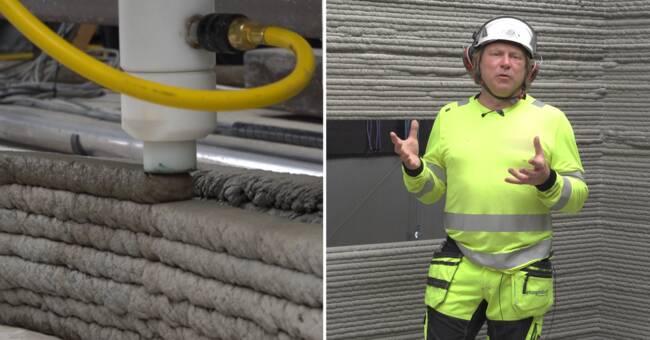In recent years, 3D-printed houses have become an increasingly hot trend.
In California, more than 1,000 people are queuing up to move into printed houses.
And earlier this year, a Dutch couple became the first in Europe to move into a 3D-printed house.
With the support of the Swedish Energy Agency, the first Swedish house has now been printed.
The hope is that the technology in the future will both be able to reduce costs and reduce construction time.
In addition, the vision is that 3D technology will provide greater design freedom and reduce material consumption.
- I think this is one of the ways we will be able to robotize the construction industry of the future, says Tobias von Haslingen, project manager at the company Concreteprint.
Researcher: There is a lot to prove
Lars Stehn, professor of industrial and sustainable construction at Luleå University of Technology, thinks the technology is interesting.
But he believes that there is a lot to prove.
- Building frames for houses is relatively cost-effective.
The technology must be much faster and the concrete quality improved if you are going to make the whole house through 3D printing, he says.
He emphasizes that he thinks it is good to test and examine the technology, but rather believes that it is in details that 3D printing has its greatest merit.
- I have a bit of a hard time seeing what quality you get that you do not get with today's construction methods.
But on the other hand, to make advanced and unique parts for houses, where I think the future definitely exists, says Lars Stehn.
Builds a new printer - the goal is 100 houses in three years
Sweden's first 3D-printed house will be used as an exhibition house in Tumba.
And Tobias von Haslingen is optimistic.
- This is our first major printout, and we have shown that we can build on the height without everything collapsing.
The quality will only get better and better, he says.
The next step is to refine 3D printing to industrialize the technology.
Right now they are building a new printer, which will be able to print houses that are 20 x 15 x 10 meters.
The hope is that it will be ready in the beginning of 2022. When the new printer is in place, Tobias von Haslingen hopes that the market will be convinced.
- The current prototype has some weaknesses in terms of production.
So with the new printer, the hope is that we will be able to print much faster.
- My goal is to print 100 houses over the next three years, he says.

